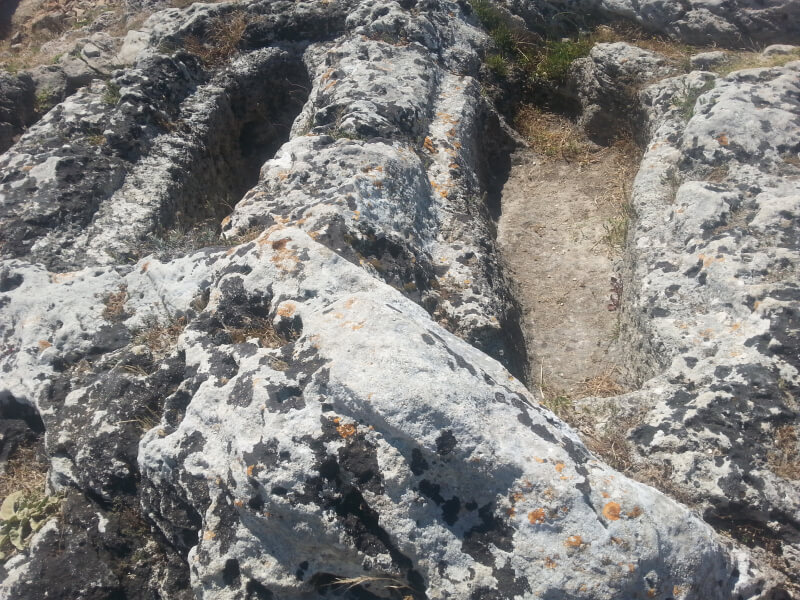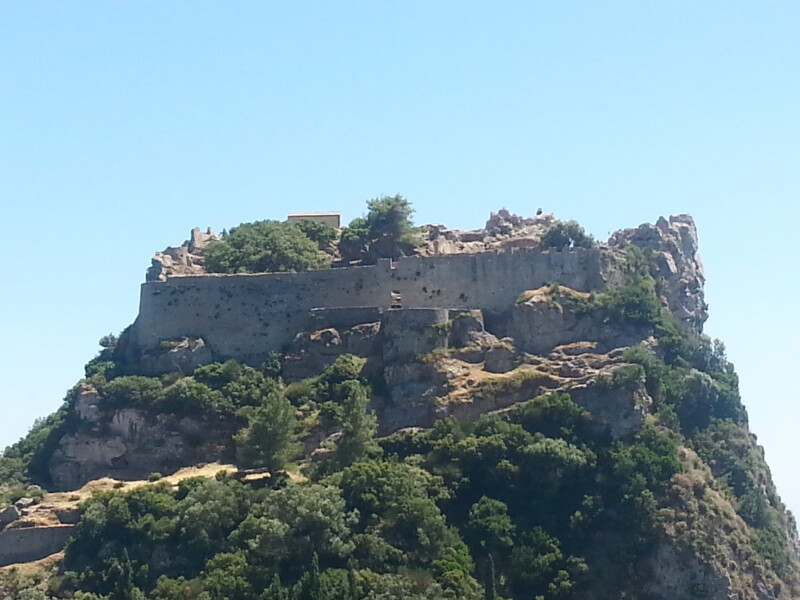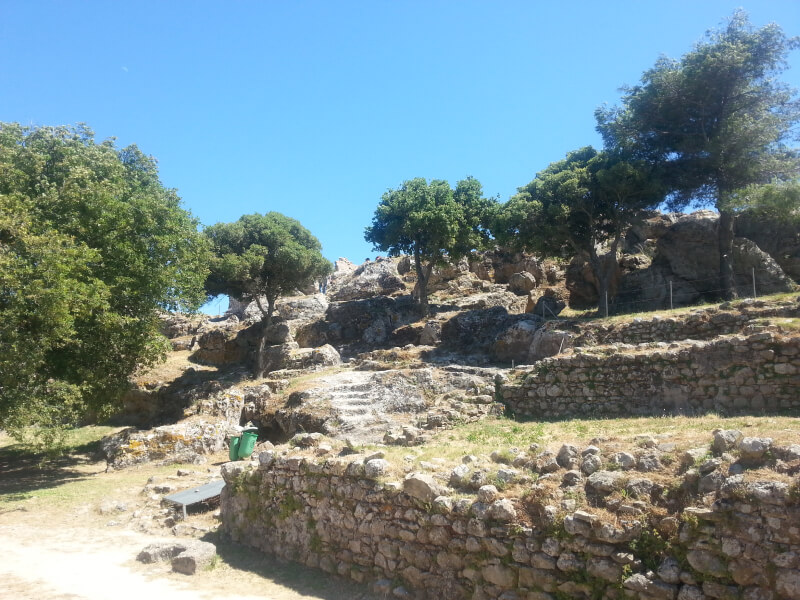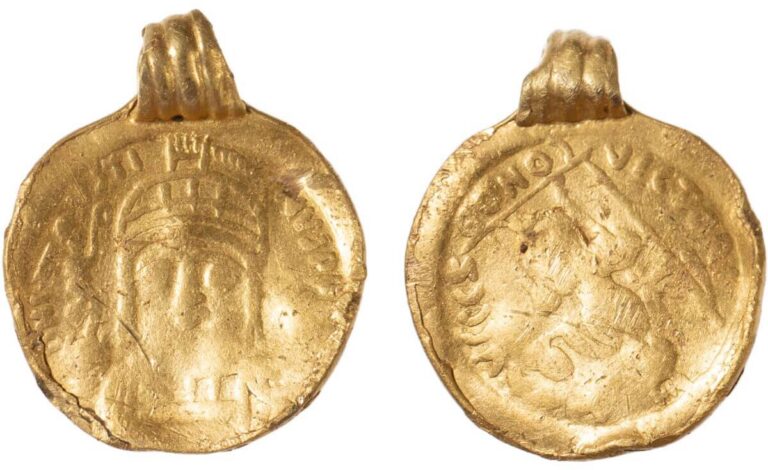The Byzantine perched castle of Angelokastro in Corfu
Angelokastro is located at the top of the highest peak of Corfu´s shoreline, in the northwest coast, and built on particularlz precipitous and rocky terrain, which makes it one of the most dramatically situated byzantine castle. It stands on a steep cliff, 1000 feet (305 m) above the sea and surveys a wide area of the island, as well as a large part of the surrounding sea.
It was one of the most important fortified complexes of Corfu and formed a defensive triangle with the other castles of Gardiki and Kassiopi, protecting the island on the south, northwest and northeast. During invasions, it helped shelter the local peasant population. The villagers also fought against the invaders playing an active role in the defence of the castle.

Early Byzantine era.
During excavations in 1999 by the 8th Ephorate of Byzantine Antiquities, two early Christian closure tabs and other findings were unearthed at the top of the Angelokastro hill, indicating that the site was probably occupied by a three-aisled church, and perhaps fortified during a period between the 5th and 7th centuries. The graves to the west of the ruins, carved out from the rock and in the shape of human bodies, are not dated with certainty.
Whatever form of occupation they might have represented likely vanished by the Komnenian era and is not documented anywhere.


Angelokastro in Komnenian times.
The exact period of the construction of the present castle is not precisely known. Although there is no evidence from historical sources or archaeology, it seems reasonable to suppose that the Komnenian emperors were involved with the site. Indeed, the political context in this area changed significantly: with the loss of the last Byzantine stronghold in Bari, Italy, the Normans redirected their ambitions towards Byzantine territories across the sea. Corfu thus became a target and a strategically significant location on the new western borders. It is possible that fortifications were erected at Angelokastro during this period to better safeguard Corfu from Norman threats. The Normans, in fact, forcibly seized the island in 1081 and again in 1147.
The period of the Despotes of Epirus.
Since no evidence supports an earlier construction, the erection of Angelokastro has often been attributed to the reigns of the Despot of Epirus, Michael I Komnenos, who captured Corfu in 1214. His son, Michael II Komnenos, further fortified the area and is sometimes mentioned as the builder of the fortress. Its name itself could be a reference to its builders, as the despots were descendants of the Komnenoi Angeloi, two former reigning imperial families of Byzantium. However, the first documentary evidence for the fortress only dates back to 1272 when Giordano di San Felice took possession of it for Charles of Anjou, who had seized Corfu from Manfred, the king of Sicily.
The motivation for building the castle may have been to protect the island from pirate attacks, as well as to warn the city of Corfu of approaching dangers from the sea – the city itself is visible from the castle, and the garrison could signal any threat to the city. Some Byzantine remains in a location called Patima, near Angelokastro, also indicate the presence of a settlement in the area whose population could have used Angelokastro hill as a shelter in times of crisis.


The castle never fell, neither in Byzantine times nor later. But in 1259, the Despot gave Corfu as a dowry for the marriage of his daughter to Manfred of Sicily. The House of Anjou seized it in 1267, after Manfred passed. It later became Venetian, and the castle played a decisive role in defending the island against pirate incursions and during three sieges of Corfu by the Ottomans, significantly contributing to their defeat.






